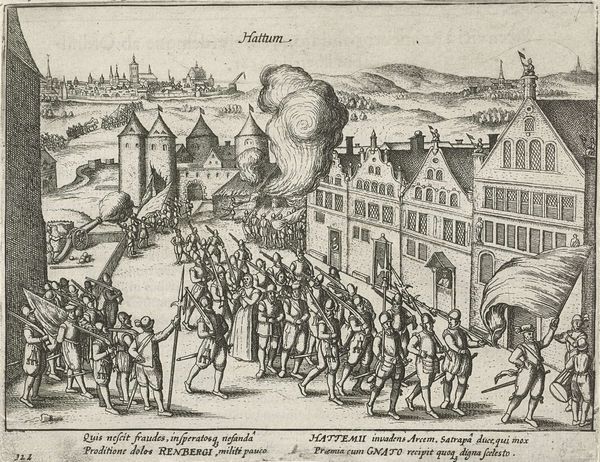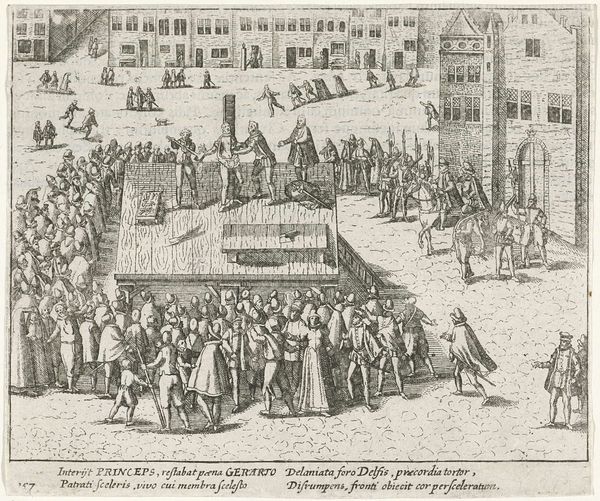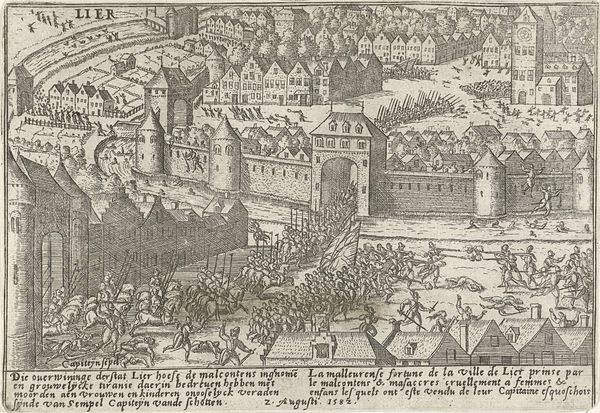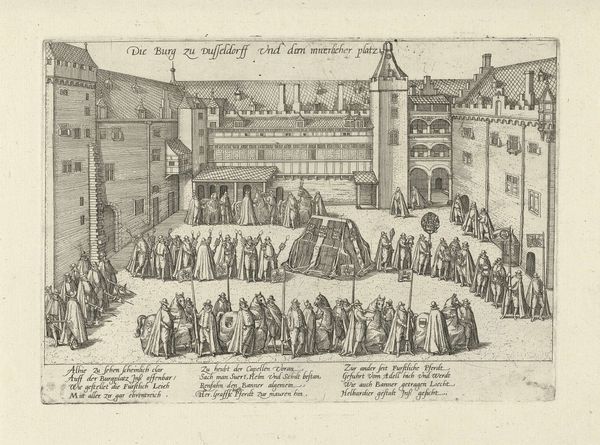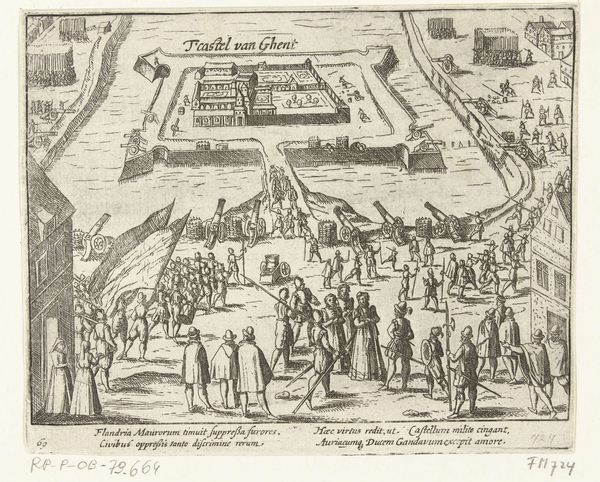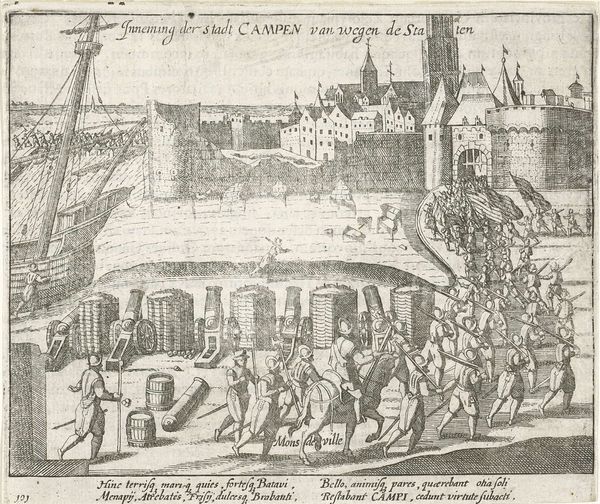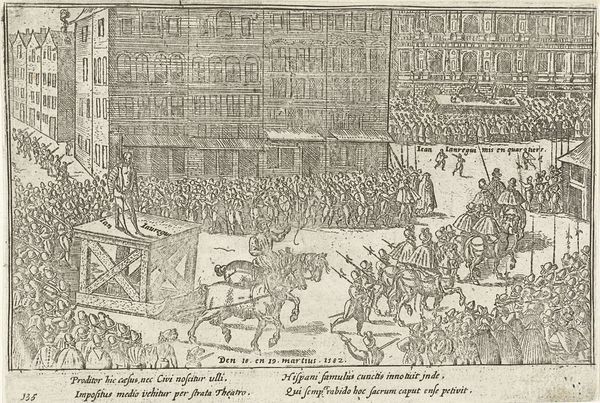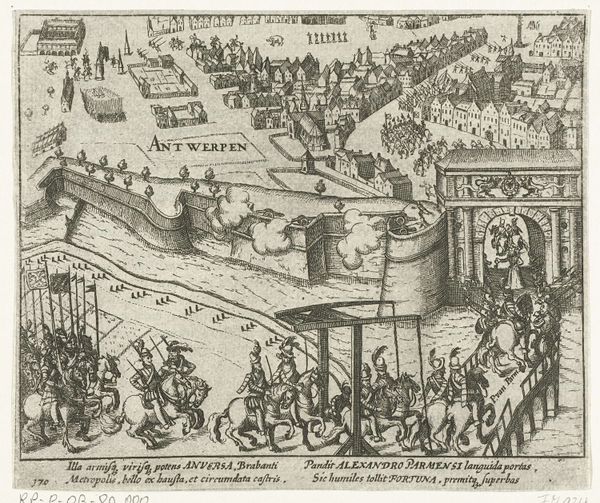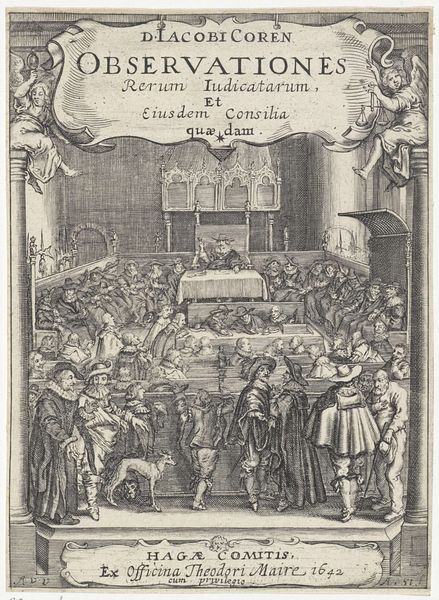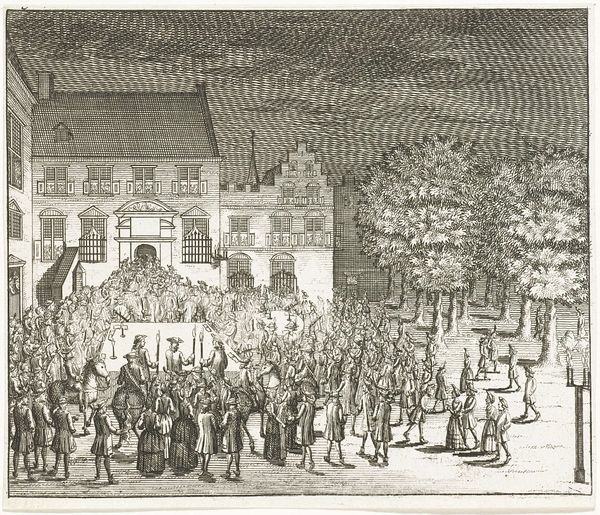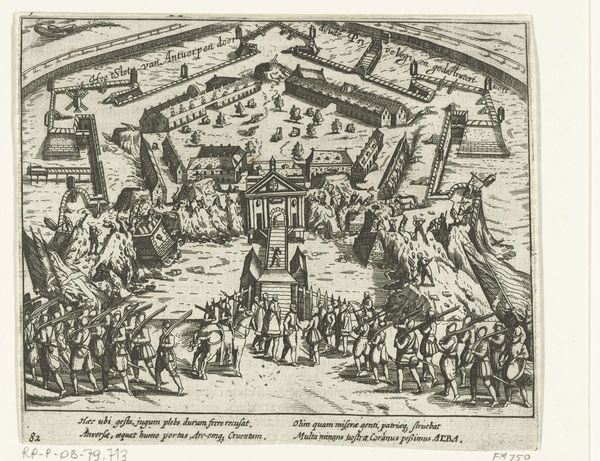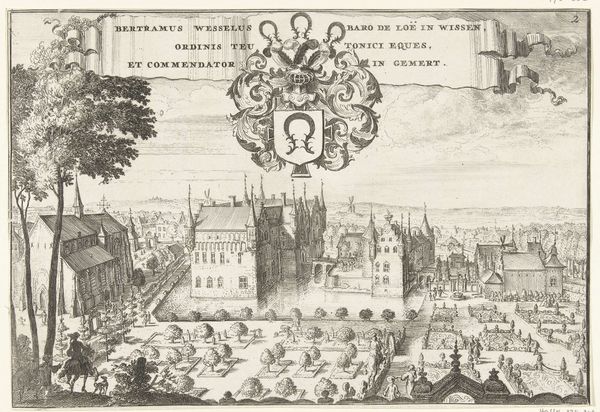
print, engraving
#
medieval
#
narrative-art
#
pen drawing
# print
#
landscape
#
figuration
#
line
#
history-painting
#
engraving
#
realism
Dimensions: height 133 mm, width 159 mm
Copyright: Rijks Museum: Open Domain
Curator: Here we have a rather fascinating print entitled, "Begrafenis van Willem van Oranje, 1584," which translates to "Funeral of William of Orange, 1584". It was created anonymously sometime between 1613 and 1615. The artwork now resides here at the Rijksmuseum. Editor: Immediately, the stark, linear quality strikes me. The detailed depiction of the procession, all those figures in their robes, has a mournful and weighty feel to it. Curator: Indeed. While executed with fine lines typical of an engraving, the print speaks to a significant historical moment. Beyond being just a line drawing, we see a deliberate construction of William’s image after his assassination. Funerals of powerful people are almost always loaded with symbolic weight. Editor: Absolutely. Look at how the artist positions the funeral procession. It isn't just a street scene; the repetitive figures draped in similar clothing imply solemnity. Their unity speaks volumes, I would say, about the public face that authorities sought to portray despite political fracture after the leader’s death. It reminds people how unified this event wants you to remember the country being, and therefore the artist attempts to create that cultural and institutional push for unity after this very divisive moment in time. Curator: Yes. And consider the choice to depict the event from an almost bird's-eye perspective, in landscape style. It distances the viewer while simultaneously presenting a broad view of the social impact of his death on the area. There's a powerful cultural need to visually establish him as the most important person of this cultural region, both in life and death. This is reinforced through an organized religion narrative of sacrifice and then mourning, giving him even more power after he is gone. Editor: You know, examining its narrative-art aspects combined with linear depiction reminds me of similar historical scenes. I appreciate this image's ability to blend artistry with historical documentation. This visual record allows the public to connect with that pivotal time while also seeing how authority is trying to spin it. Curator: Precisely, It offers a glimpse into the politics of imagery and collective memory surrounding such events in history. Editor: Well said. The symbolism in the depiction coupled with social and institutional history truly does help it resonate with people now as much as back then. Curator: Yes, a great demonstration of how visual and institutional culture continue to inform and evolve, from generation to generation, building on our modern concept of collective memory.
Comments
No comments
Be the first to comment and join the conversation on the ultimate creative platform.
